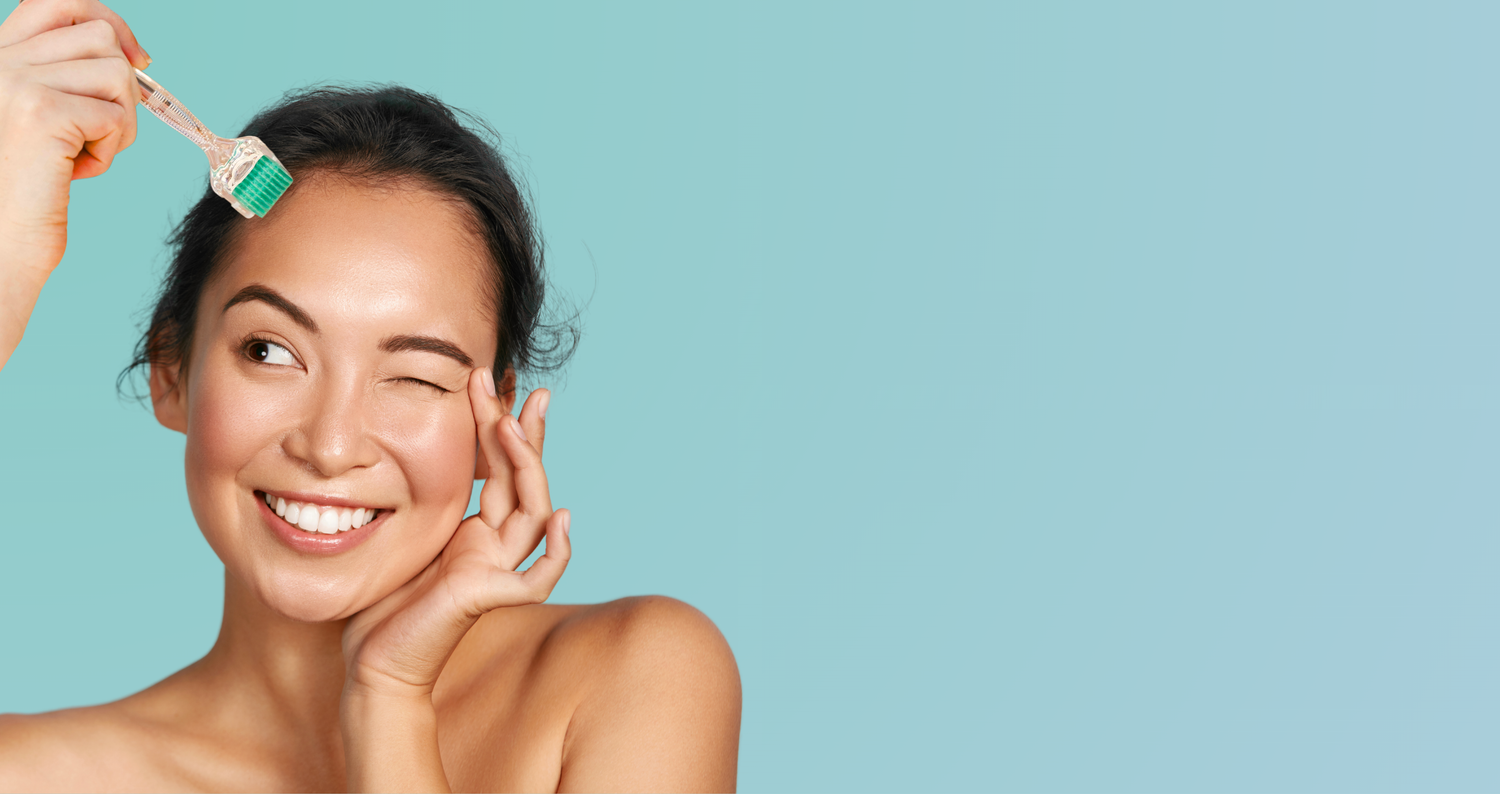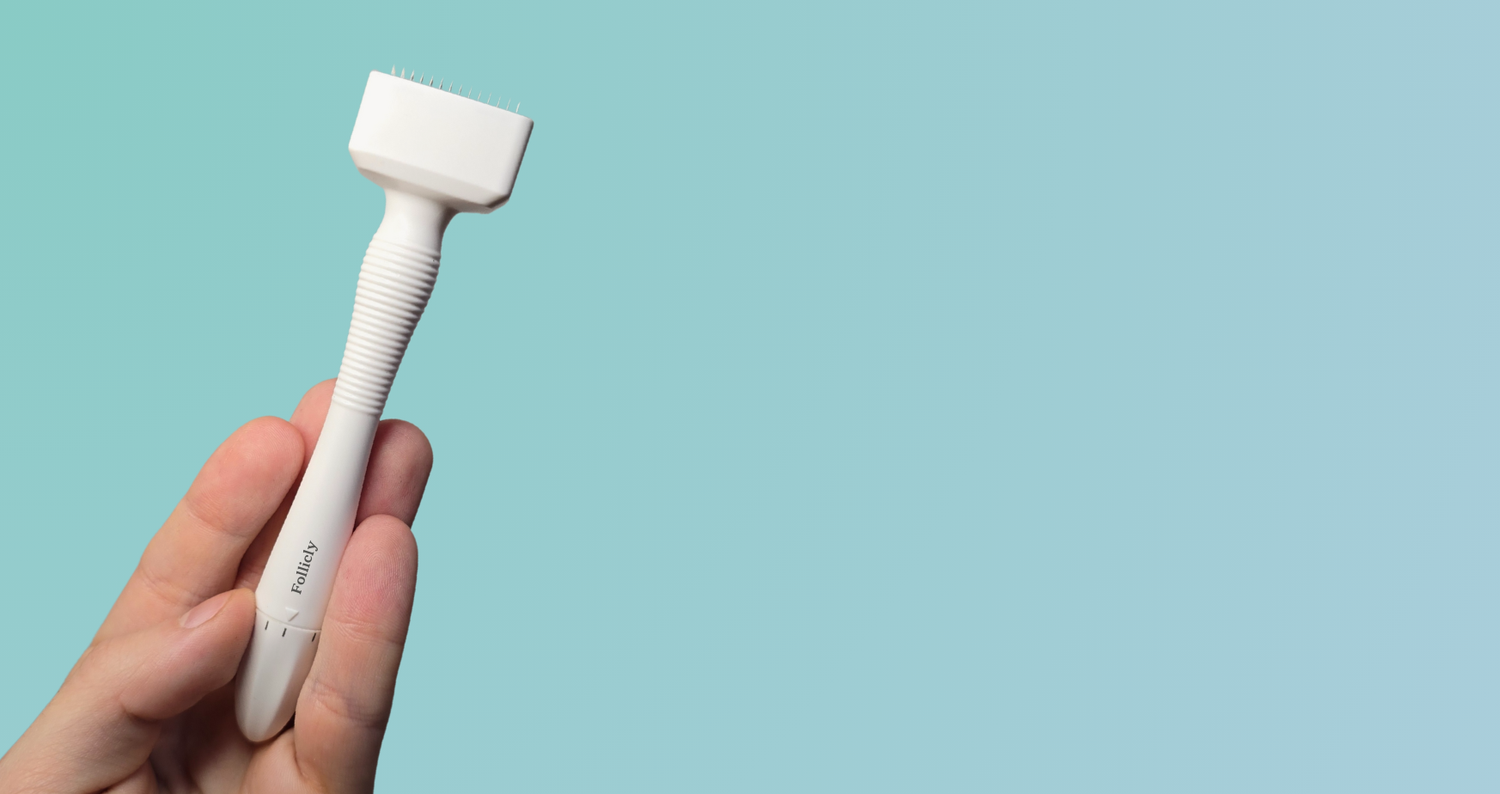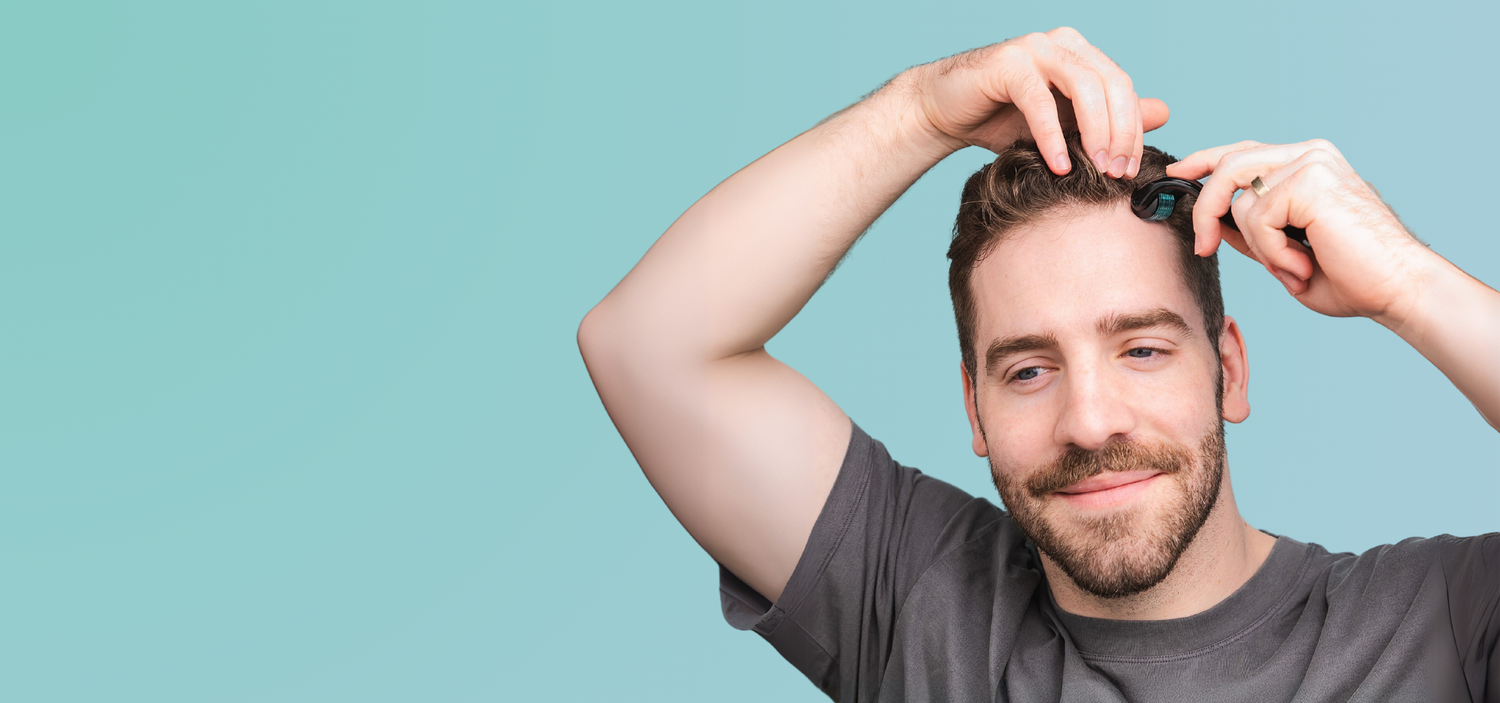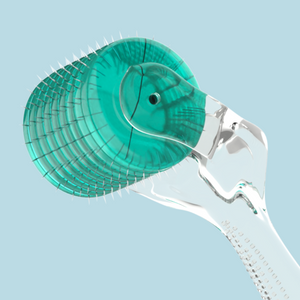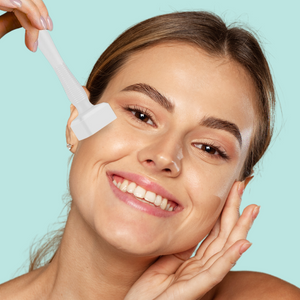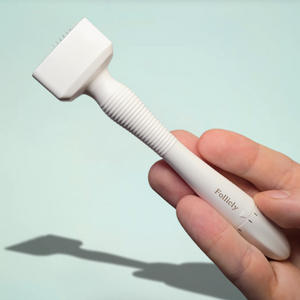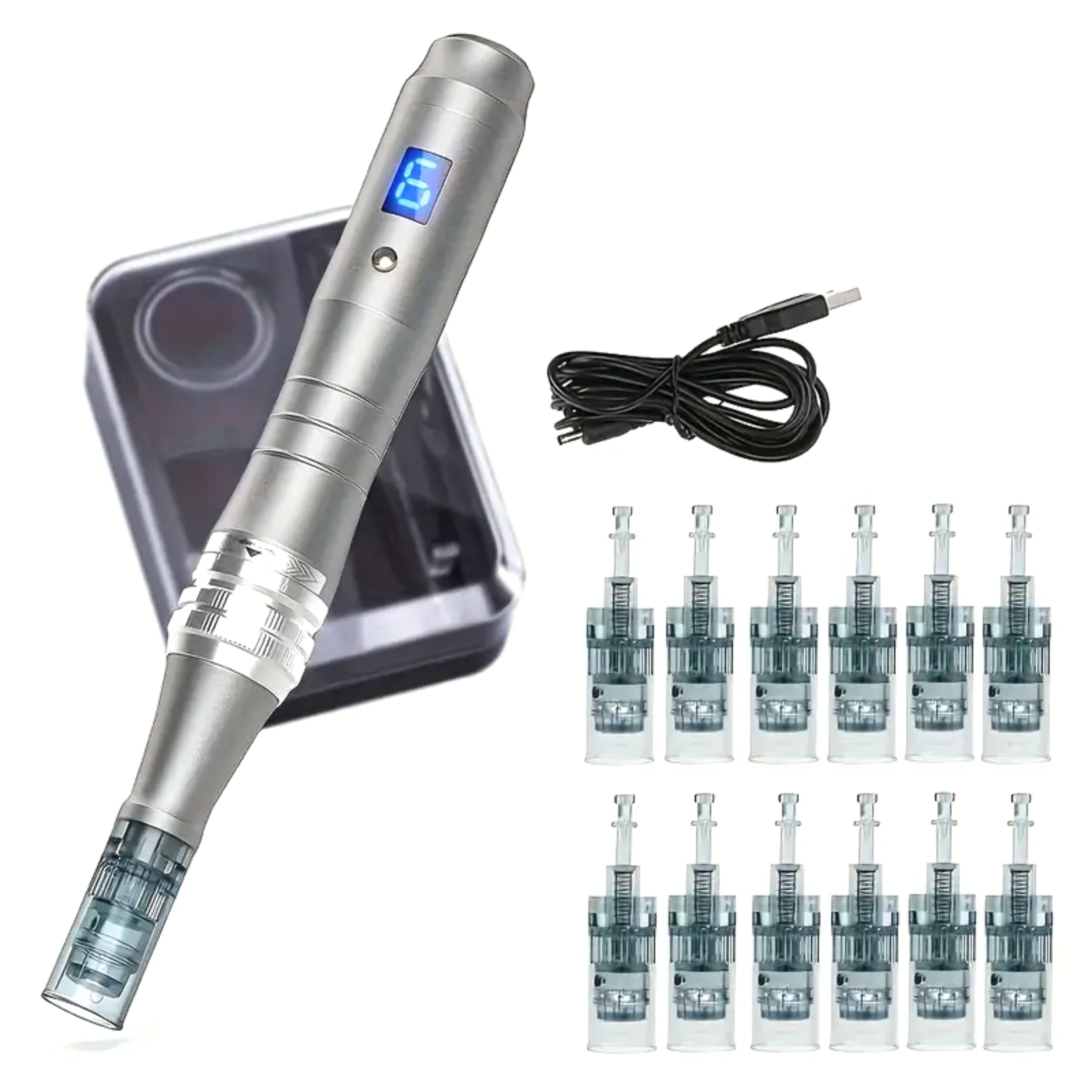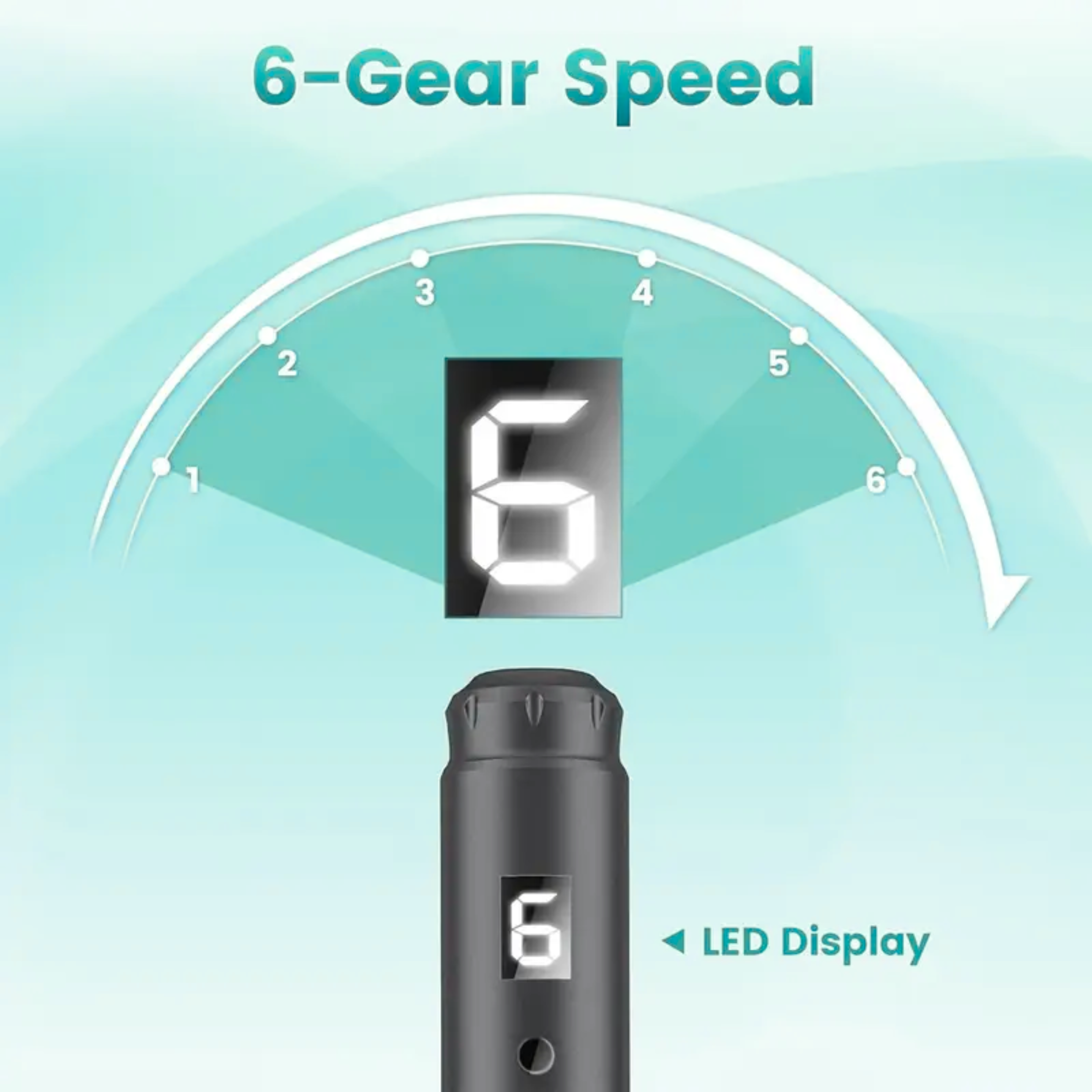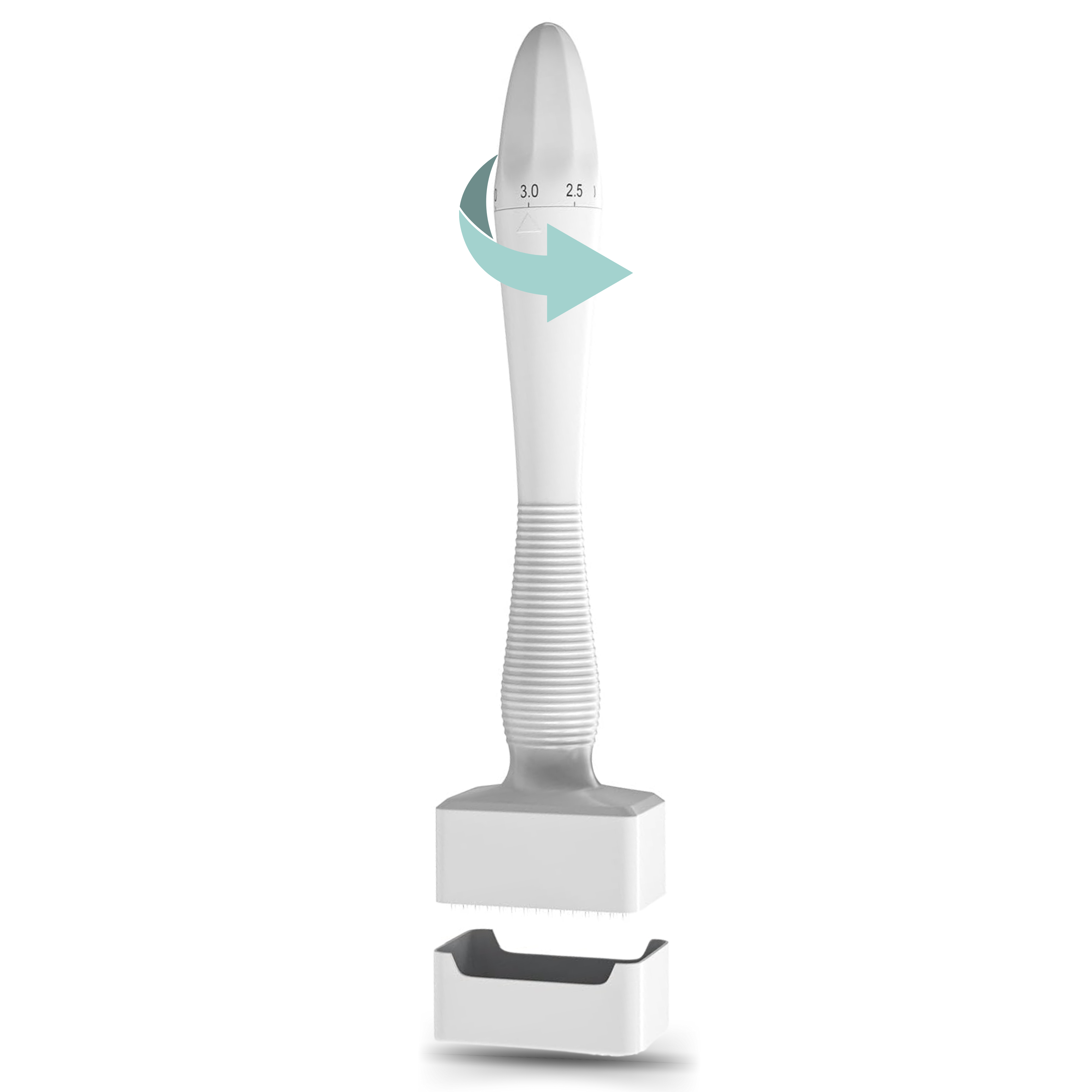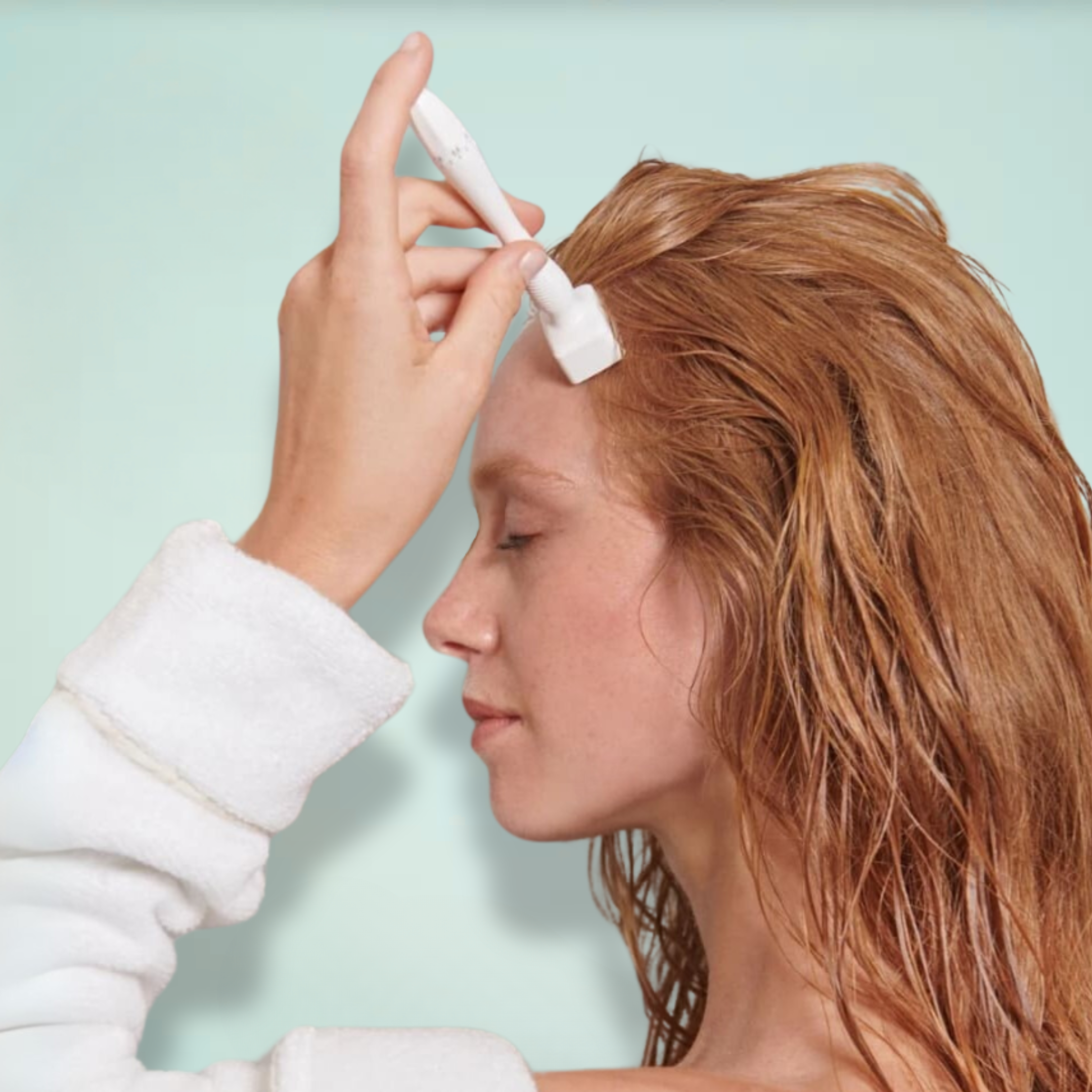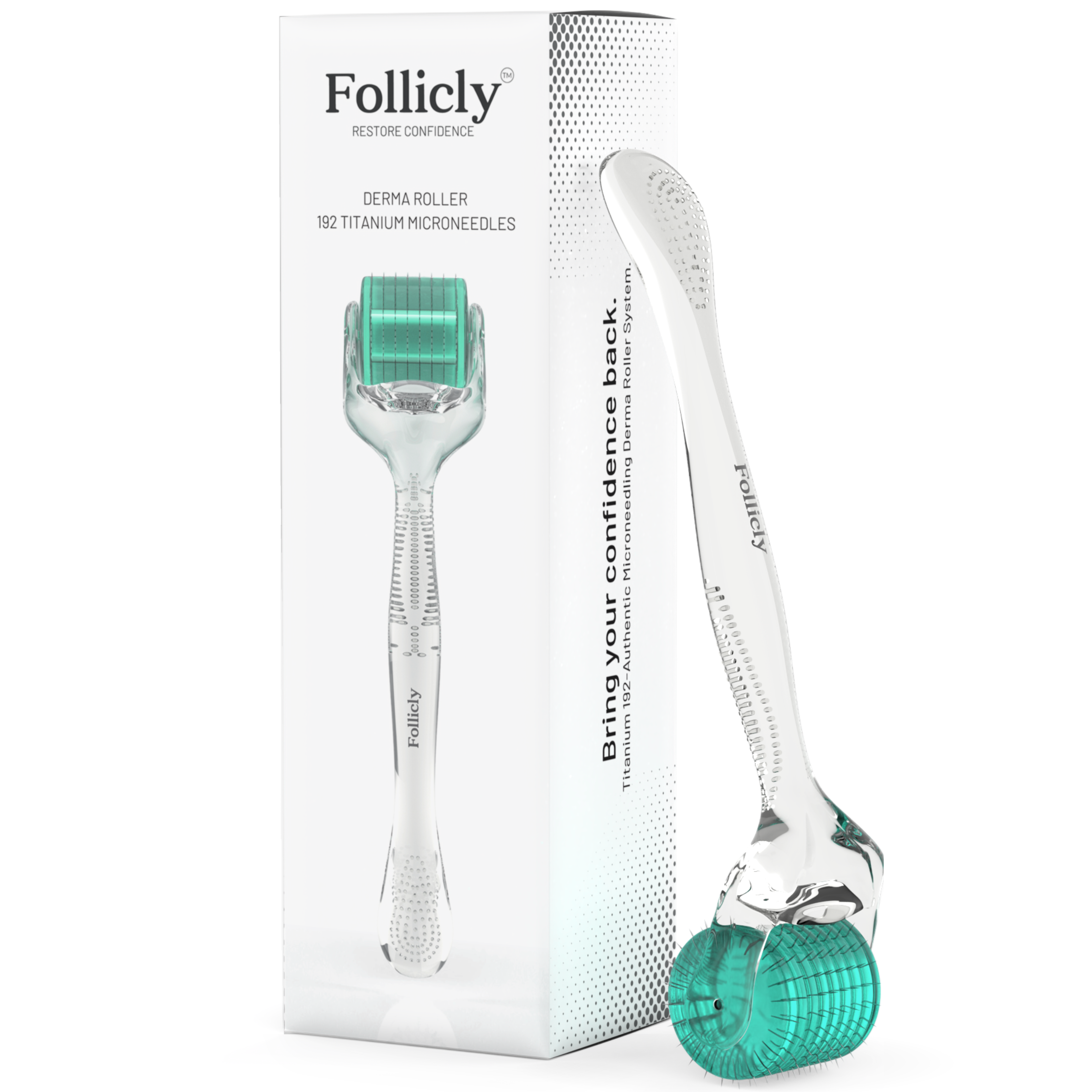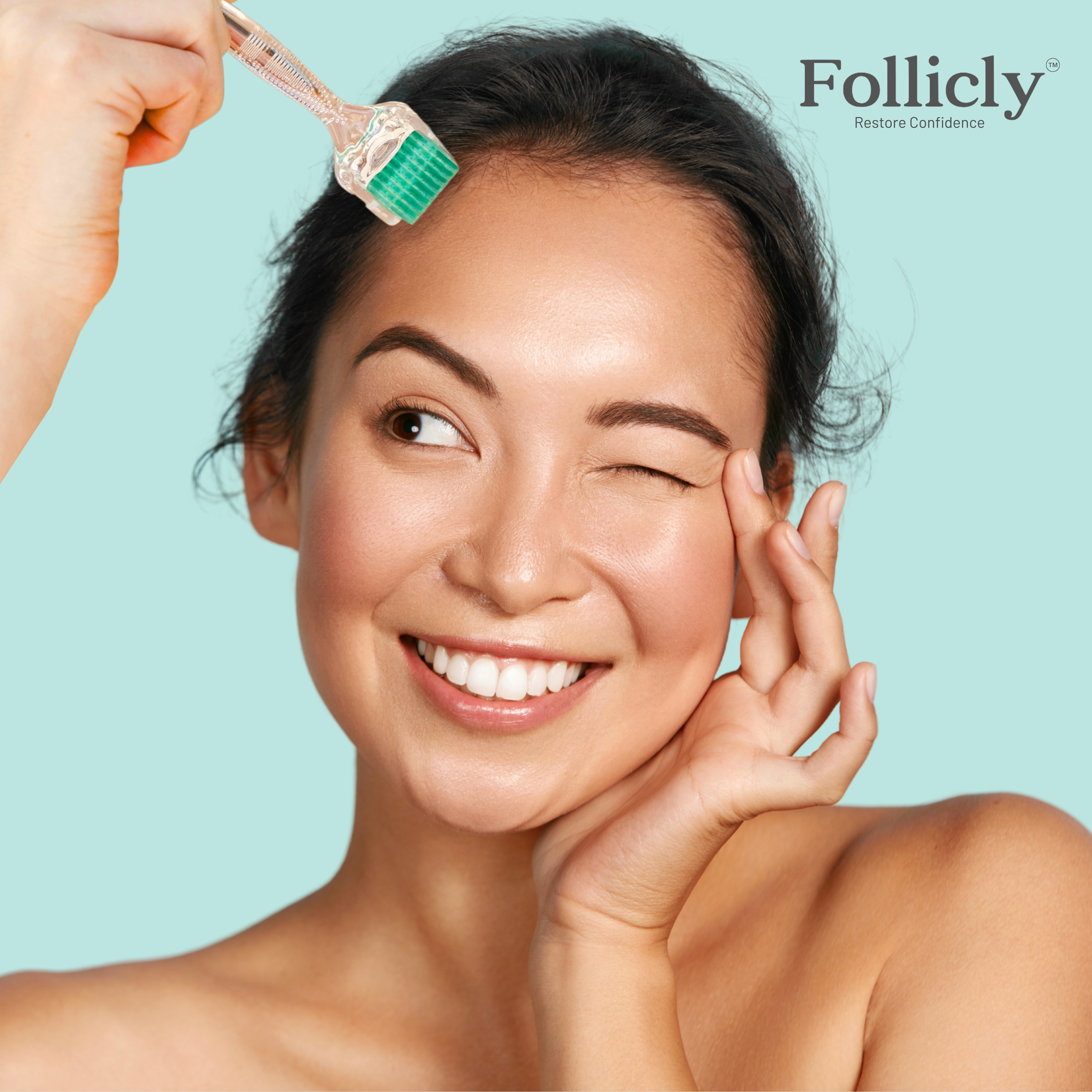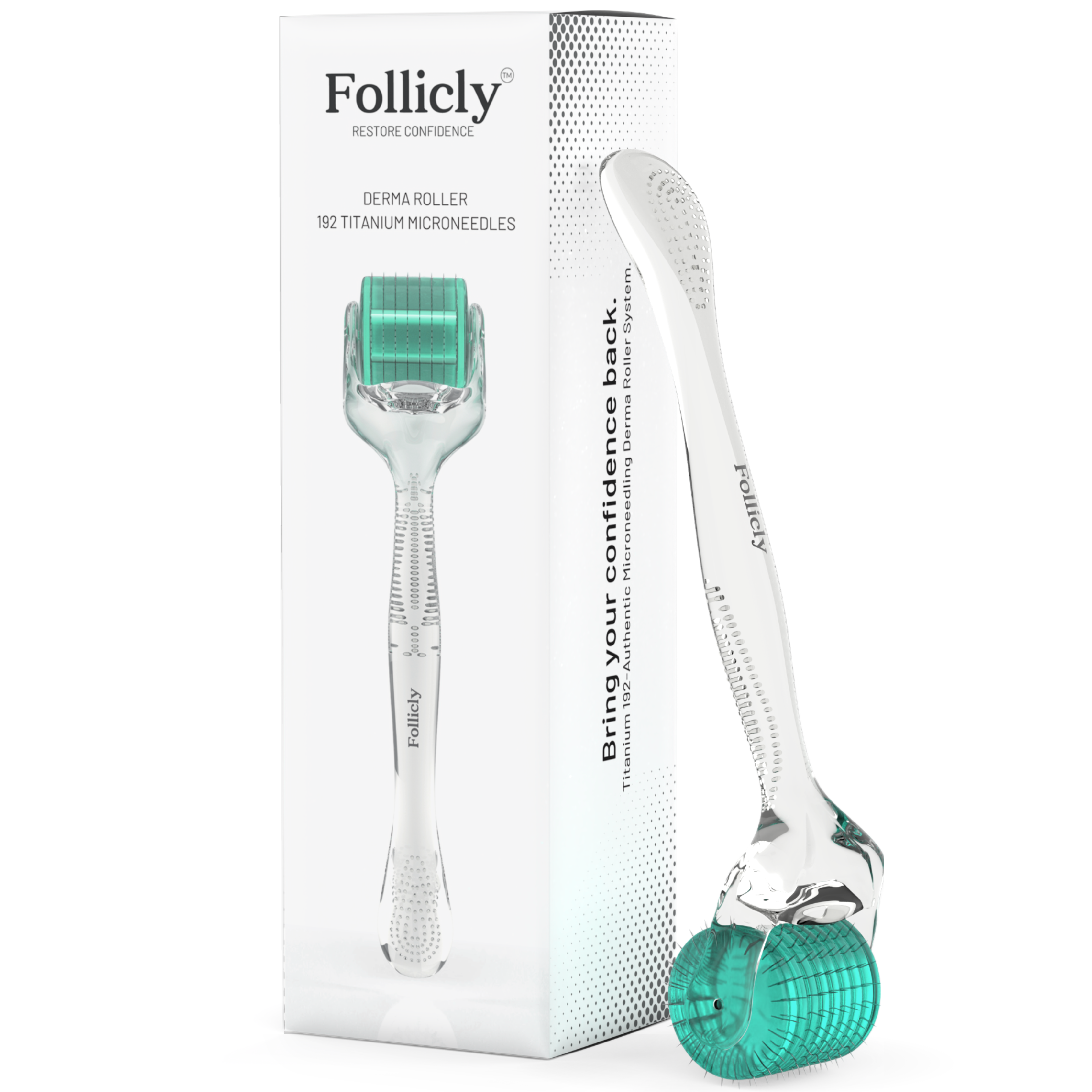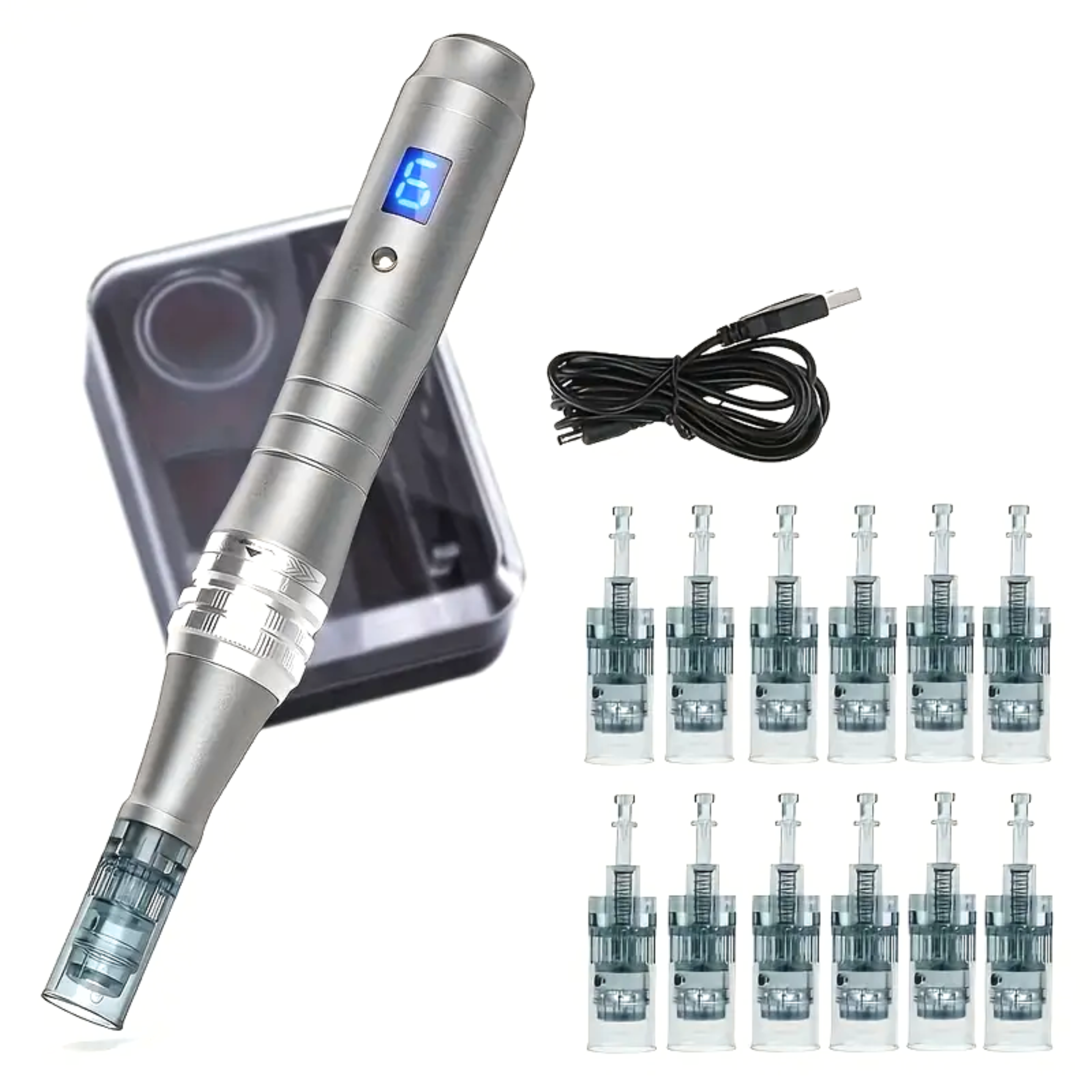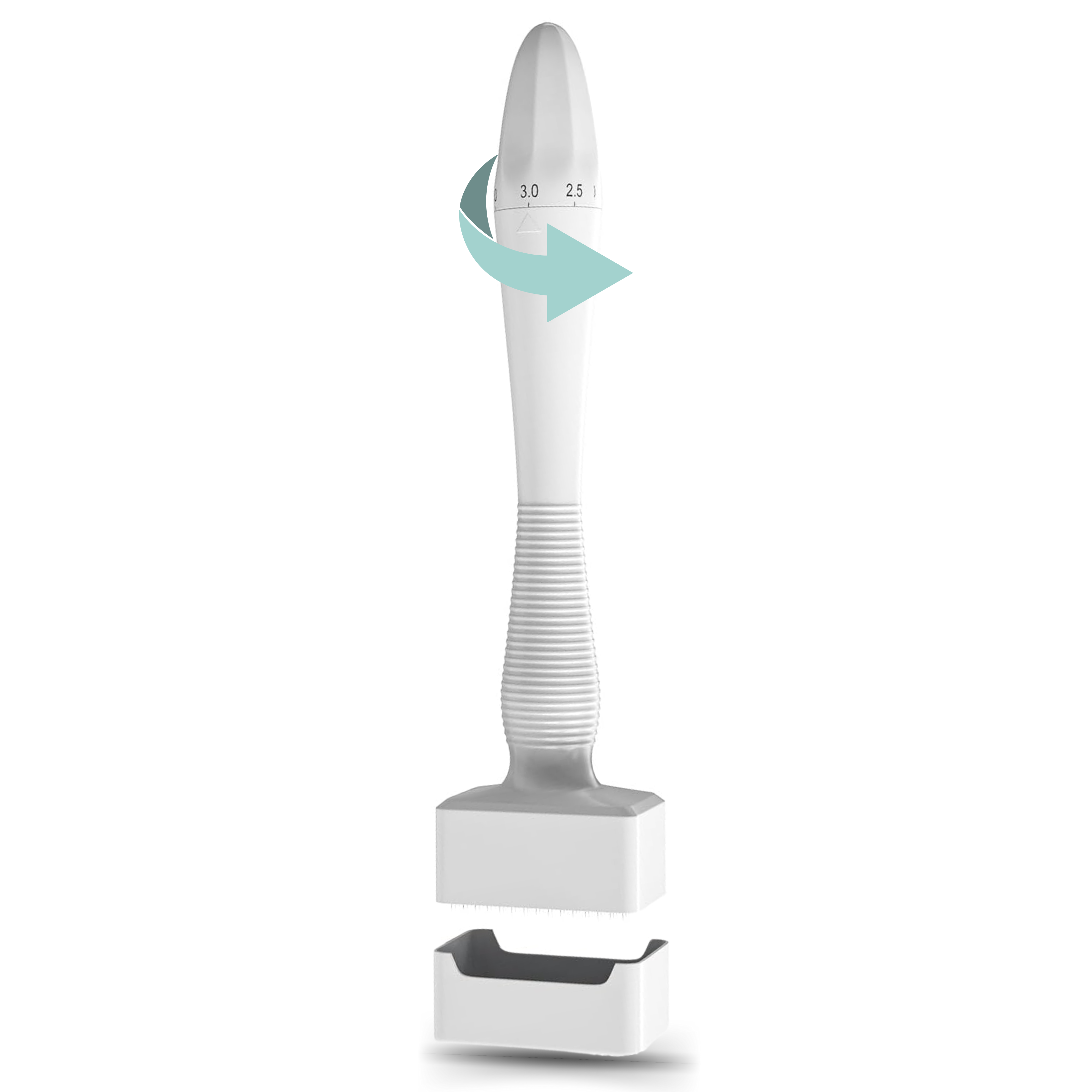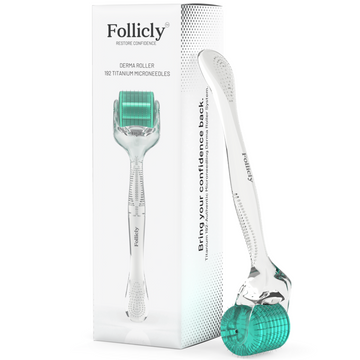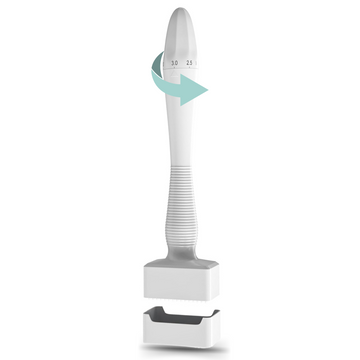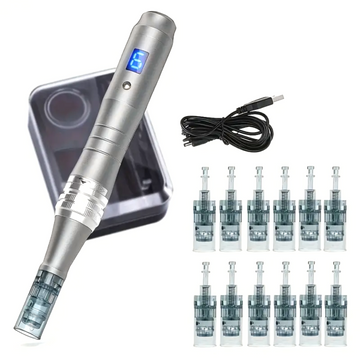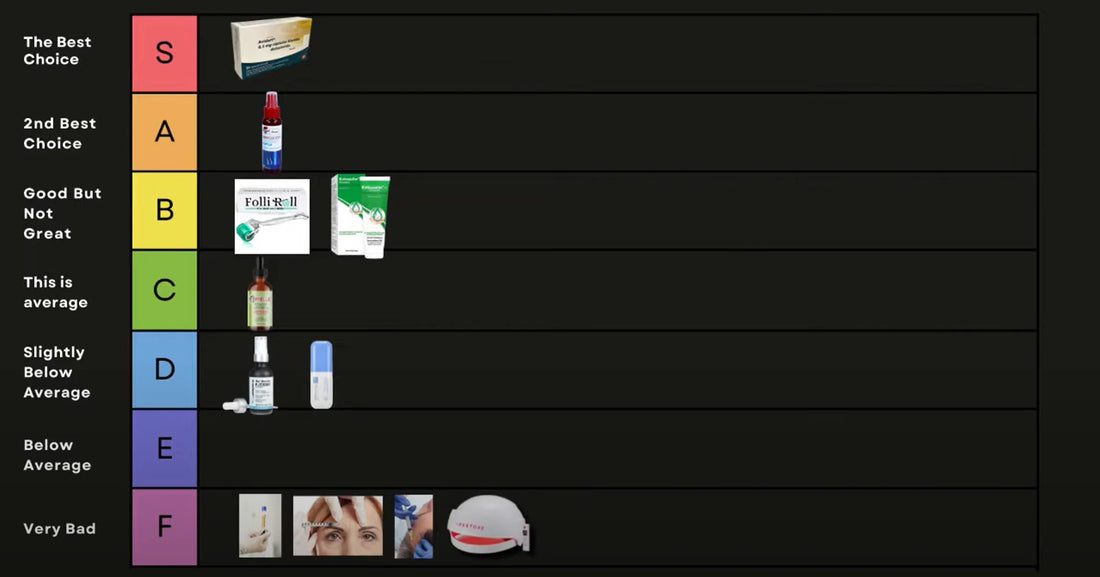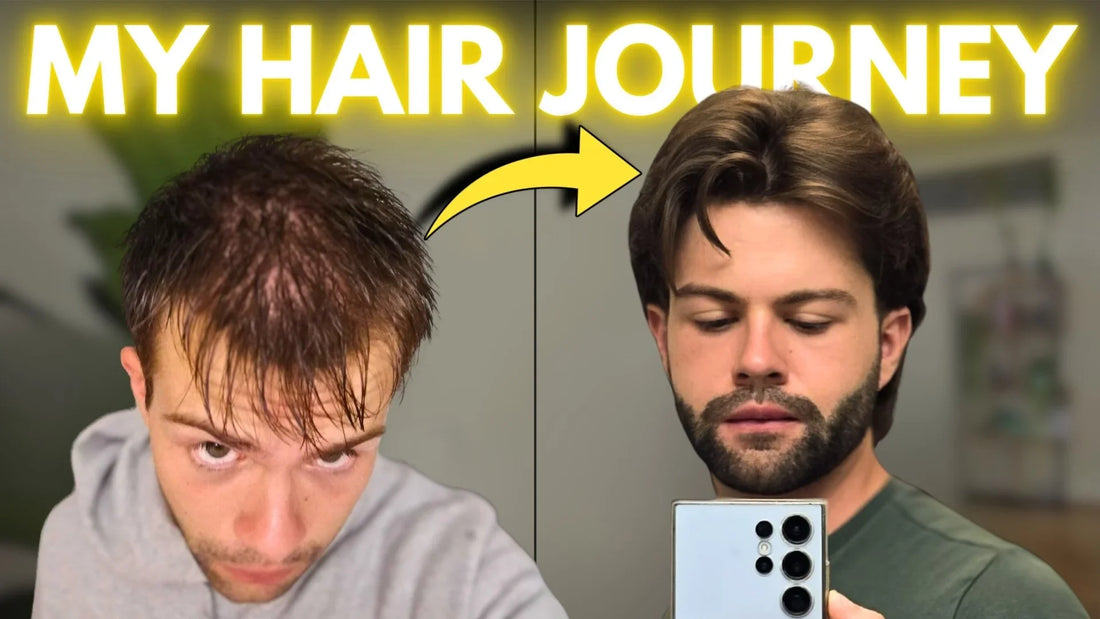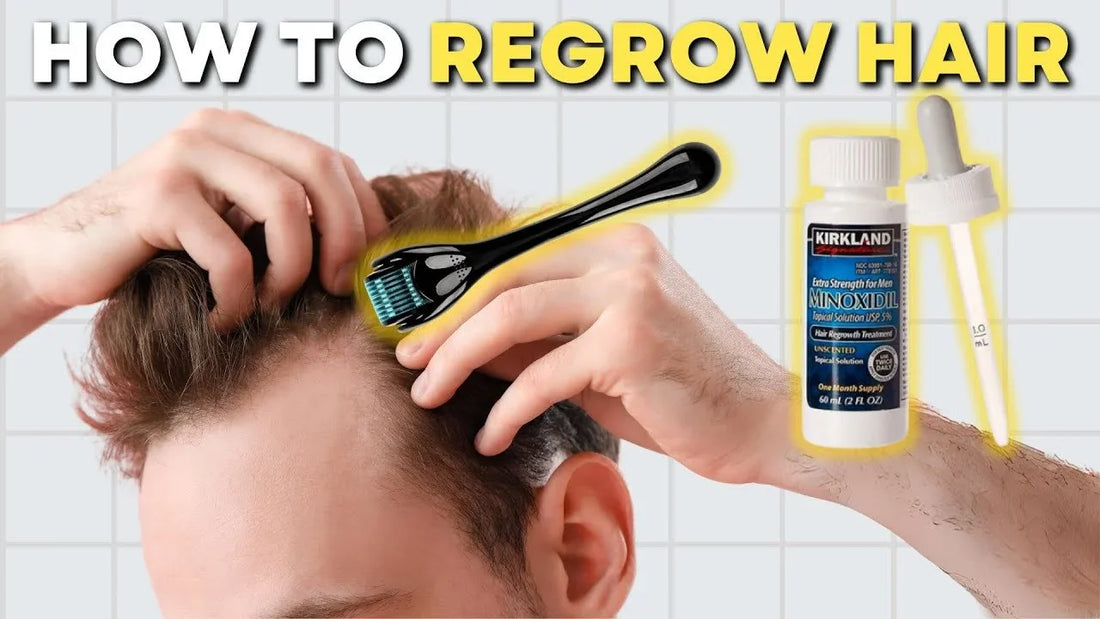Vendor: Follicly™
Follicly™ Derma Pen with 12 Adjustable Needle Cartridges (16, 36, or 42 Pins)
Vendor: Follicly™
Follicly™ Derma Stamp - 140 Adjustable Titanium Microneedles
Vendor: Follicly™
Follicly™ Derma Roller - 192 Authentic Titanium Microneedles
Feel like yourself again
Looking for healthier hair and smoother skin? Our microneedling tools activate your body’s natural repair process to deliver real results.
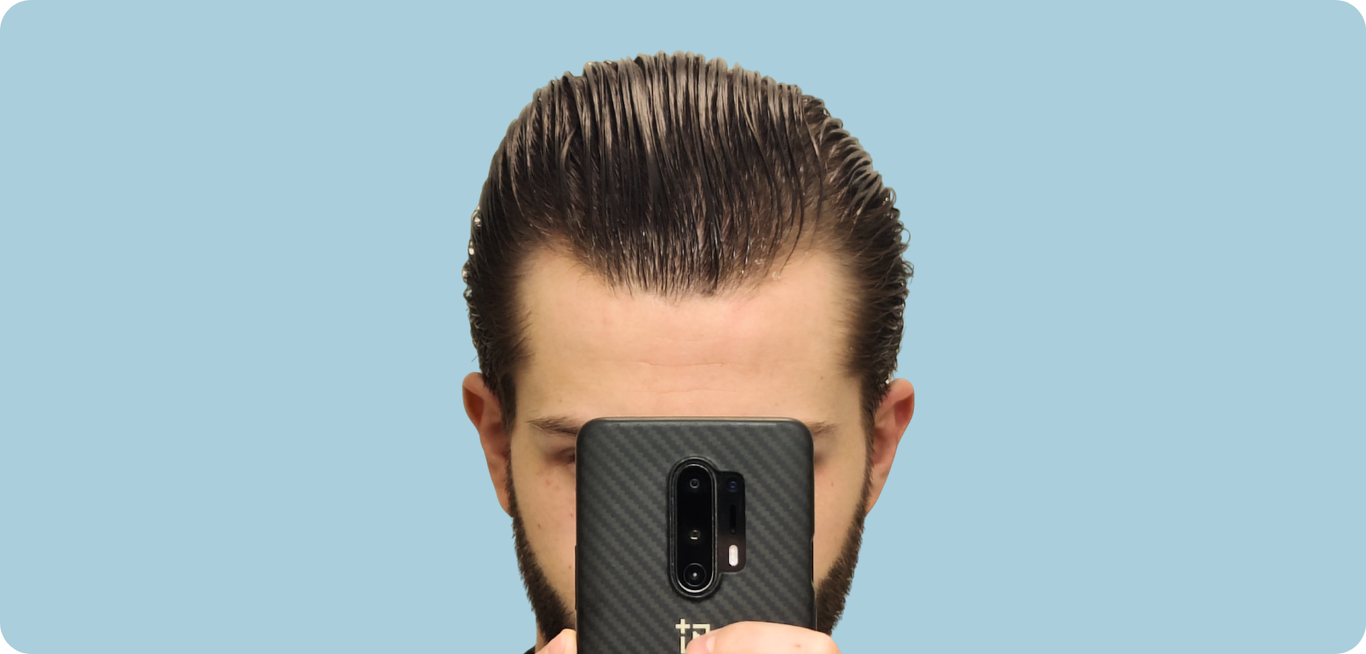
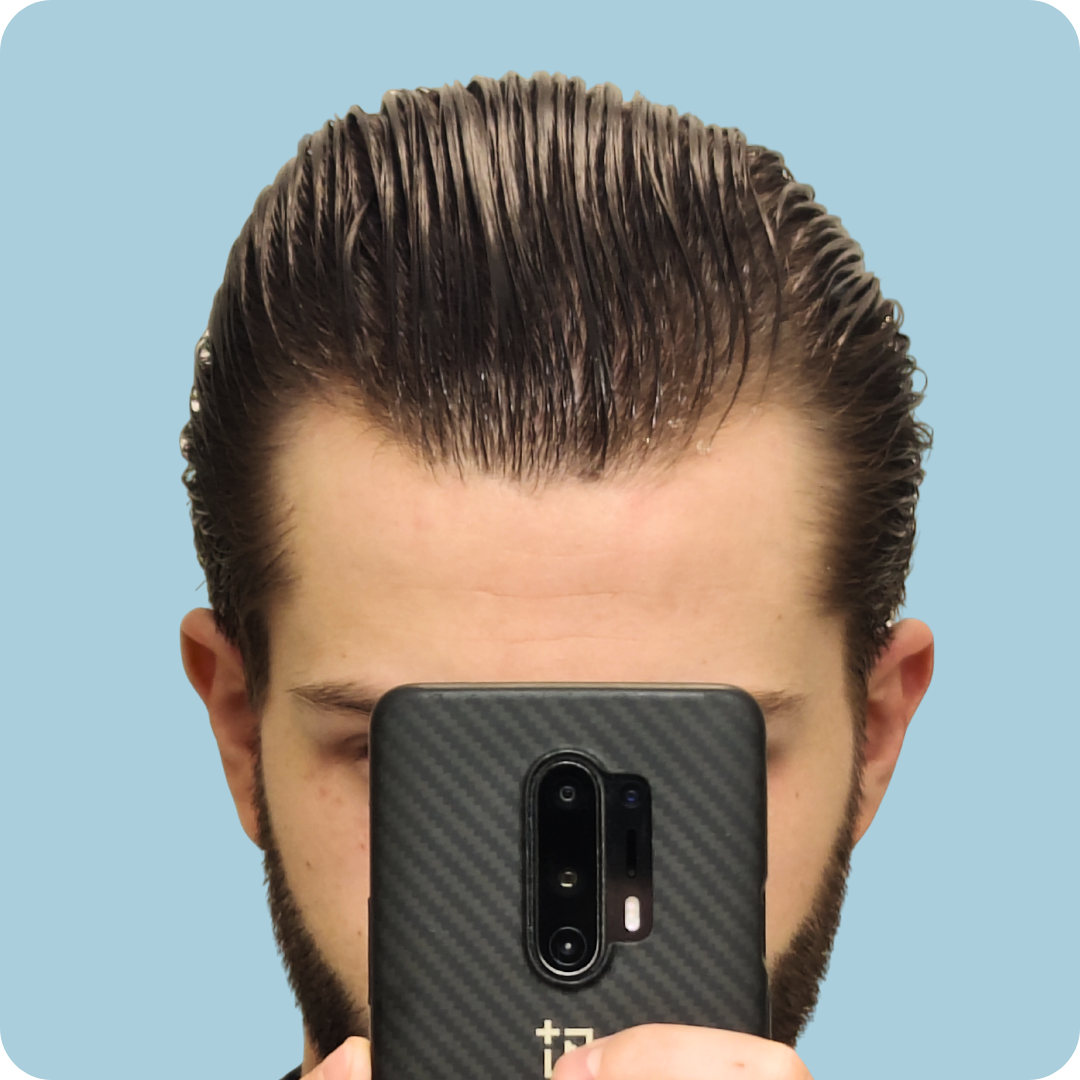
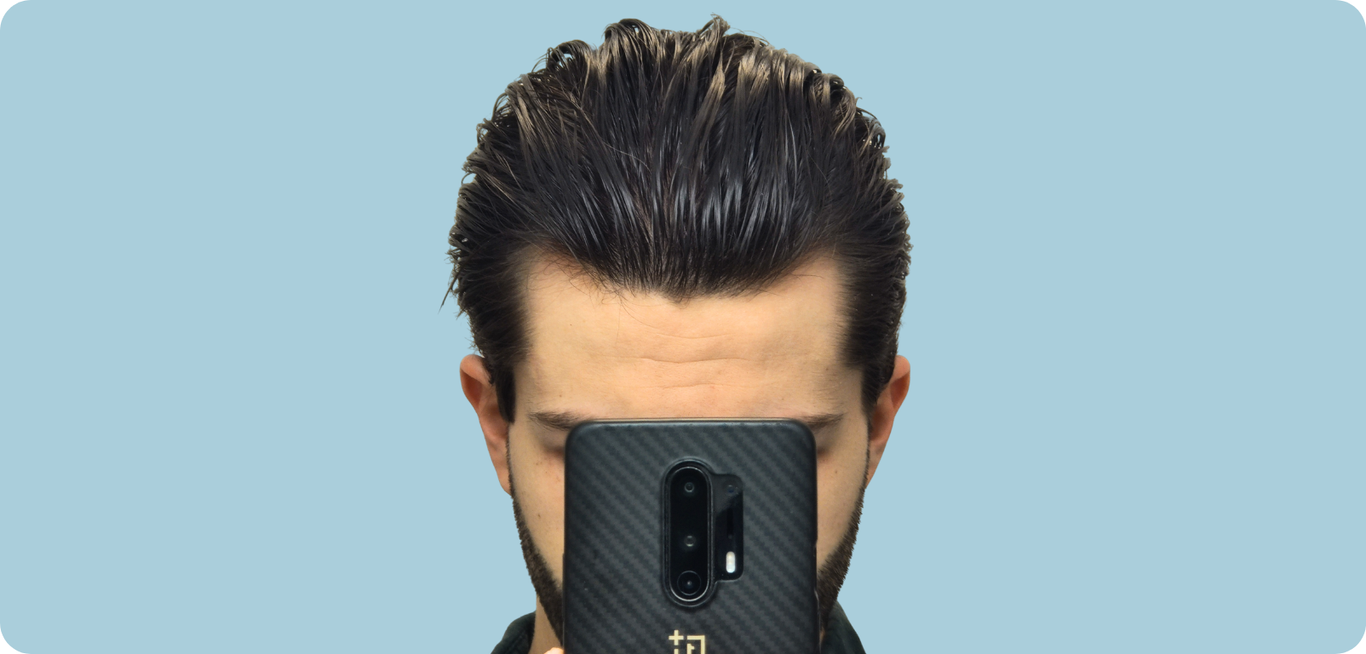
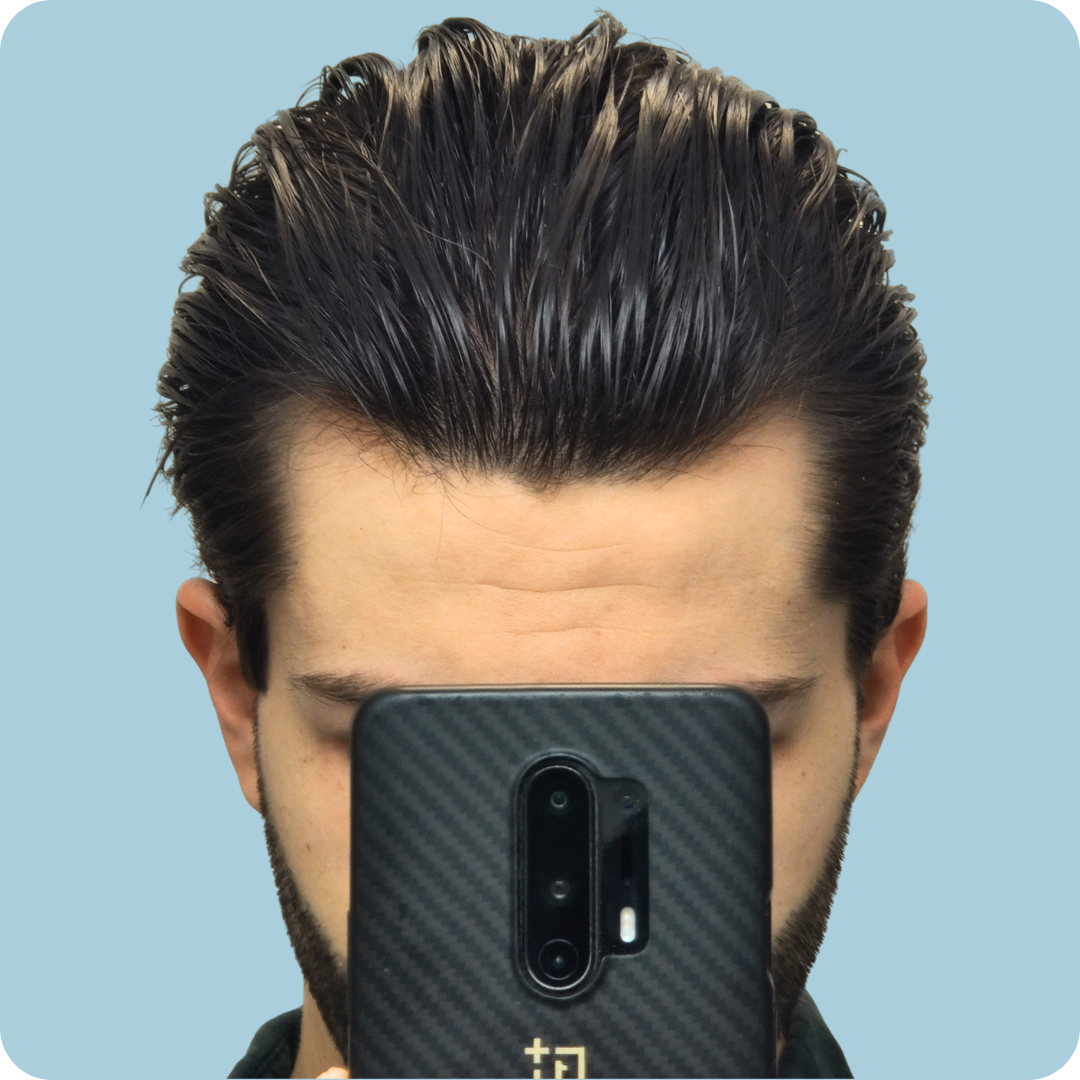
Improves Absorption of Hair Treatments
Enhances the effectiveness of topical treatments.
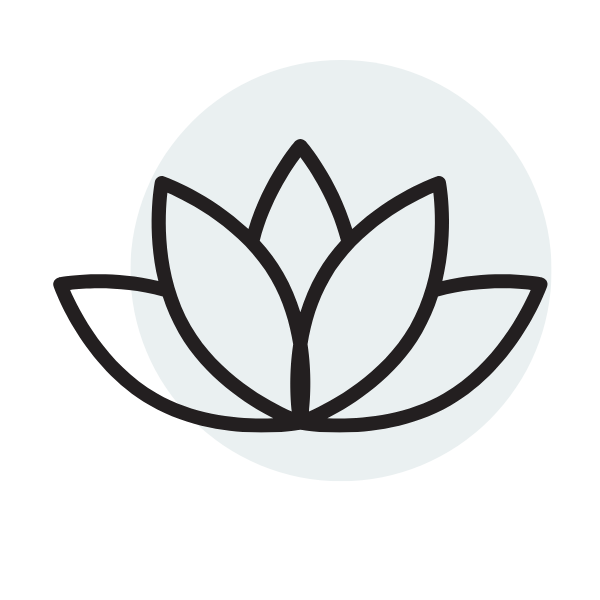
Natural Solution for Hair & Skin
Scientifically proven to improve hair and skin.
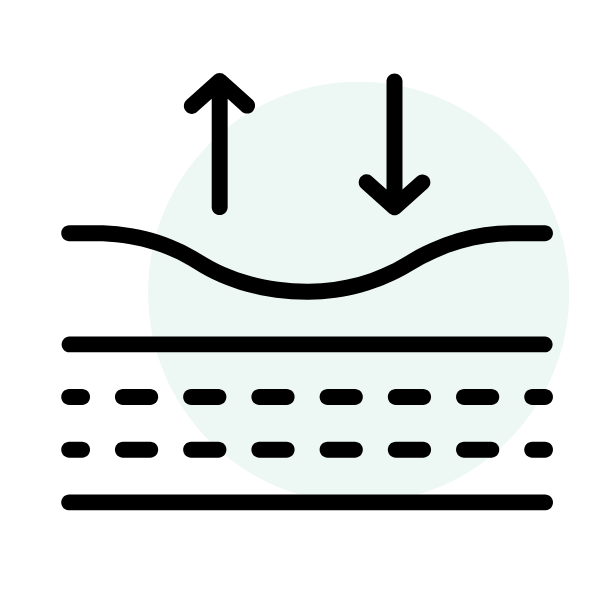
Improves Skin Texture
Stimulates collagen production, reducing fine lines, wrinkles, and scars.
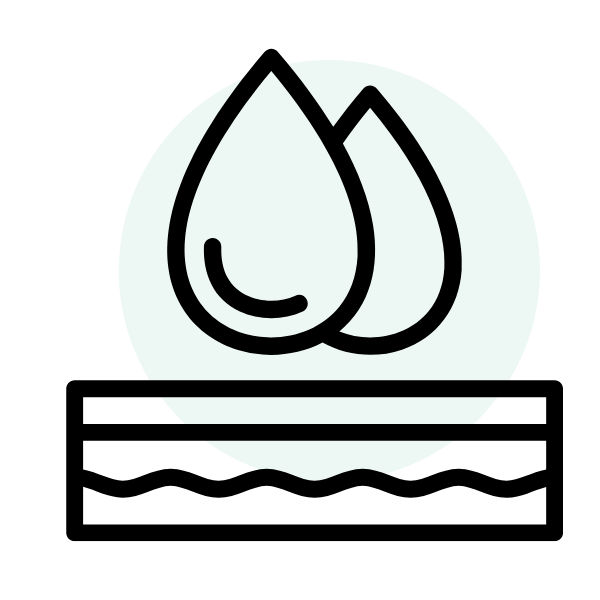
Enhances Serum Absorption
Increases product penetration, making serums and creams more effective.
Why Microneedling?
Microneedling is a simple yet powerful way to boost collagen, improve skin, and promote hair growth. It triggers your body’s natural healing, helping with thinning hair, scars, and uneven tone. We provide the best tools to get results.
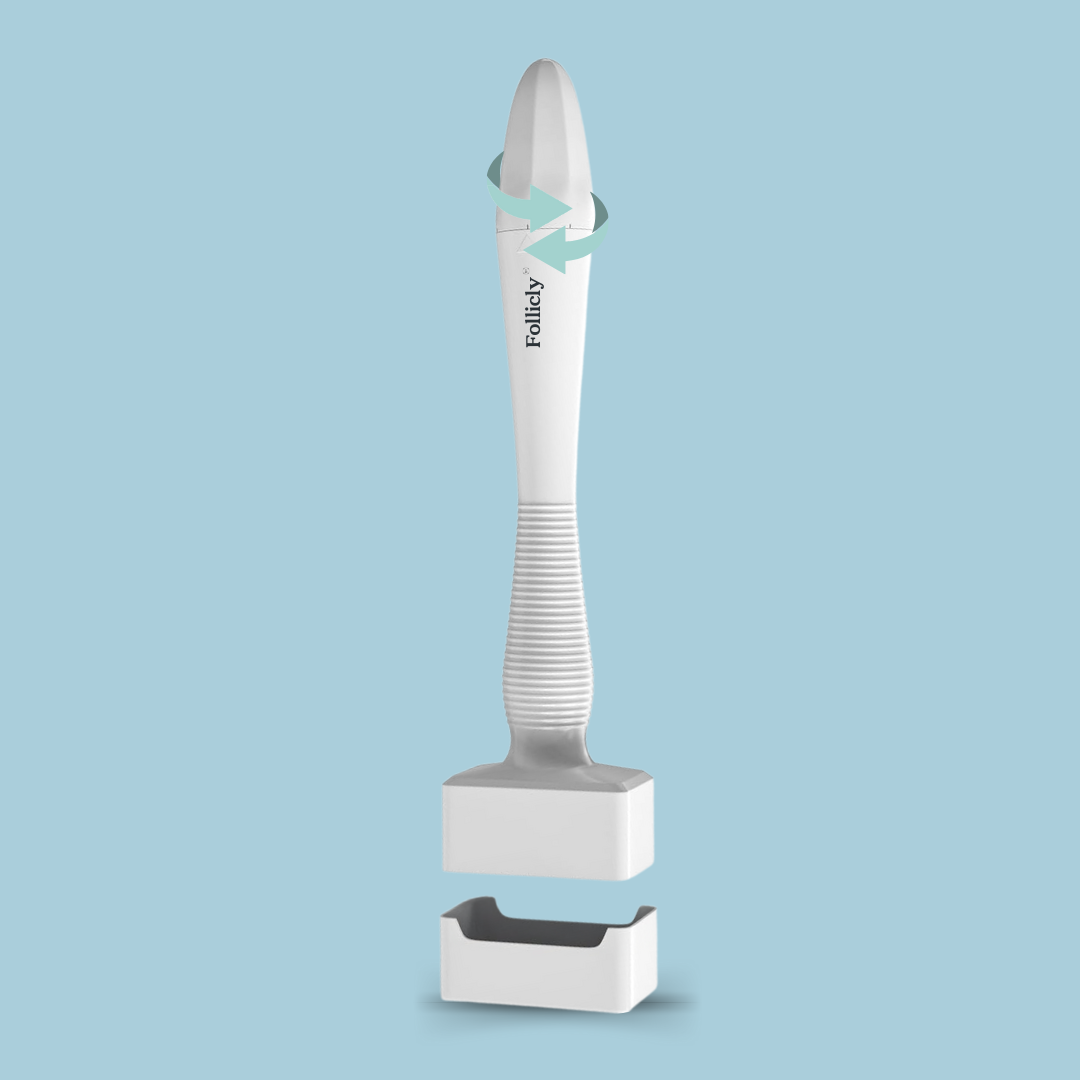
How does it help with hair loss?
How does it help with hair loss?
Microneedling creates tiny punctures in the scalp, increasing blood flow and collagen production. This stimulates hair follicles and promotes healthier hair growth.
Is it effective for anti-aging?
Is it effective for anti-aging?
Absolutely! Microneedling rejuvenates the skin by triggering natural repair processes, resulting in firmer, smoother and more youthful looking skin.
Does microneedling hurt?
Does microneedling hurt?
Most people experience minimal discomfort. If you prefer, a numbing cream can be applied to the treatment area to minimise pain during the procedure.
Is microneedling safe for all skin types?
Is microneedling safe for all skin types?
Yes, microneedling is generally safe for all skin types and colours, but people with active infections, severe acne or certain skin conditions should consult a dermatologist first.
As seen on TikTok
Blog posts
Ranking Hair Loss Treatments: From Worst to Best
When it comes to addressing hair loss, numerous products promise results, but not all live up to their claims. Having restored my hair using some of these treatments, I want to help you navigate your options by evaluating their effectiveness, safety, price, and accessibility. 1. Minoxidil Minoxidil bottle 5% for hair loss (Kirkland). Effectiveness: 10/10 Minoxidil (Rogaine) is a proven vasodilator that stimulates hair growth, making it one of the best options available. Many users, including myself, have seen impressive results in as little as three months. Safety: 8/10 FDA-approved and generally safe, Minoxidil can cause side effects like heart palpitations if used excessively. Stick to the recommended 1-2 ml daily. Price: 9/10 Costs around $20/month for branded versions, with cheaper options like Kirkland at just $5/month. Accessibility: 10/10 Widely available online and in pharmacies. 2. Derma Roller Derma roller for hair loss (FolliRoll). Effectiveness: 5/10 The derma roller creates micro-injuries to the scalp, promoting collagen production. Alone, it yields limited results, but combining it with Minoxidil can enhance effectiveness significantly. Safety: 7/10 While generally safe, improper use can lead to scarring. A needle length of 0.3 to 1.5mm is advisable. Price: 10/10 Typically priced between $10 and $20, I recommend a quality option like FolliRoll. Accessibility: 6/10 Available online, but not commonly found in drugstores. 3. Finasteride and Dutasteride Finasteride and dutasteride for hair loss (generic brand). Effectiveness: Finasteride: 8/10, Dutasteride: 9/10 These DHT blockers are well-researched and effective for preventing hair loss. Dutasteride tends to yield slightly better results. Safety: 7/10 Some users experience sexual side effects, but the overall incidence is low. Price: 8/10 Usually around $20/month, depending on location. Accessibility: 6/10 Requires a prescription, making it less accessible than over-the-counter options. 4. Anti-androgens (RU5884 and Pyrilutamide) Anti-androgens for hair loss (RU5884 and Pyrilutamide). Effectiveness: 6/10 These topical treatments block DHT at the receptor level. Results are variable and often lack substantial evidence, but some studies suggest potential effectiveness for androgenetic alopecia. Safety: 8/10 Topical application minimizes systemic side effects. Users report fewer adverse effects compared to oral medications. Price: 0/10 At approximately $68/month, they're significantly more expensive than Minoxidil. Accessibility: 4/10 Limited availability and often require online ordering, as they are not typically stocked in pharmacies. 5. PRP (Platelet-Rich Plasma) and Injectables PRP (Platelet-Rich Plasma) and Injectables for hair loss. Effectiveness: PRP: 4/10, Botox: 2/10, Mesotherapy: 4/10 PRP treatments use the patient’s own blood to stimulate hair growth, but results can be inconsistent. Botox may temporarily reduce scalp tension but has minimal impact on hair growth. Mesotherapy involves injecting vitamins and other substances into the scalp but lacks robust evidence supporting its efficacy. Safety: 5/10 Injection carries risks of infection and discomfort, but when performed by a qualified professional, serious complications are rare. Price: 0/10 PRP treatments can range from $1,500 to $3,500, making them prohibitively expensive. Other injectables also tend to be costly, often requiring multiple sessions. Accessibility: 0/10 Require clinical visits, adding to the time and cost, which can be a barrier for many seeking treatment. 6. Ketoconazole Shampoo Ketoconazole shampoo for hair loss (Nizoral). Effectiveness: 6/10 Often used for dandruff, ketoconazole has antifungal properties that may help reduce scalp inflammation, indirectly benefiting hair growth. Safety: 9/10 Generally safe for most people, though allergic reactions are possible. Price: 8/10 Typically ranges from $10 to $20, depending on the brand. Accessibility: 8/10 Available over-the-counter at pharmacies and online. 7. Rosemary Oil Rosemary oil for hair loss (Mielle). Effectiveness: 6/10 Some studies suggest that rosemary oil may be as effective as Minoxidil for stimulating hair growth, primarily due to its ability to improve circulation to the scalp. Safety: 9/10 Generally safe, though skin irritation can occur in sensitive individuals. Price: 10/10 Affordable, usually costing around $10 for a bottle. Accessibility: 10/10 Readily available at health stores and online. 8. Laser Therapy Laser treatment for hair loss (IRestore). Effectiveness: 2/10 Laser devices claim to stimulate hair follicles and improve hair density, but results can vary widely among users. Safety: 10/10 Non-invasive with minimal side effects reported. Price: 0/10 Home devices can cost between $200 and $500, while professional treatments can be much higher. Accessibility: 6/10 Home devices are available online, but professional treatments require clinic visits. Conclusion With a great variety of options available, it's crucial to focus on what works best for you. Minoxidil remains a top choice for its effectiveness, safety, and accessibility. Combining treatments like Minoxidil with a derma roller or DHT-Blockers can maximize results. Always consult with a healthcare professional before starting any new treatment.
Learn moreMy Finasteride Hair Regrowth Success Story (Month-by-Month Results)
Many people who have seen my videos know me for my incredible hair regrowth journey. Here’s a comparison of me before and just three months after starting minoxidil and the derma roller. Month 1 vs Month 3 results on Minoxidil and Derma Roller (before and after). Pretty insane, right? What most people don’t know is that before seeing these amazing results with minoxidil and the derma roller, I had been using another hair loss treatment on its own—finasteride. I was on finasteride way before starting minoxidil and derma rolling. So today, I want to share my story about how I first started balding at 20, how I began taking finasteride, and my month-by-month results from using ONLY finasteride. This way, if you're experiencing hair loss, or know someone who is, you'll have a good idea of what to expect. Finasteride block the production of DHT, the hair loss hormone. Hi, my name is Al Garrido, and welcome to another blog. I remember that when I first started to lose my hair at age 20, I was desperate to find a solution. I simply couldn’t allow myself to go bald so young. This is my personal opinion, but I feel like going bald makes you feel insecure, and robs you from a lot of opportunities that you would have otherwise had. I looked everywhere for videos and stories of people who managed to regrow their hair. That’s why I know that you will really appreciate this story if you are in a similar situation. Just take notes and comment below your questions and progress on any hair loss treatment. Before starting finasteride (month 0): Alright, so these are the first pictures of me before starting finasteride. As you can see, the situation was not good. In this picture in the middle, you can see how bad my temple area was looking, with a lot of hair gone by then. The same can be said about the crown area, which was clearly visible at that time. So all these are pictures of the month 0, when I started taking finasteride. Month 0, pictures from temple and crown area. Month 0, pictures from the crown area. Month 1 and 2 results (slight improvement): Going next to month 1, I’m not going to lie, there was a slight improvement, but not very much. You need to consider that finasteride can stop hair loss, but it’s a long process. Month 1 results. This is me on month 2 of taking finasteride. Here, believe it or not, I was starting to notice some new hair growth. It was very slight, but this before and after comparison should help you see the difference. The same can be said of the temple area, which was slowly but steadily showing some new baby hairs coming out. Month 2 results (crown area). Month 2 results (temple area). Month 3 results (happy about the progress): Month 3 was great! Whenever I compared the pictures with before, I was very happy because I knew I was making real progress. Month 3 crown area results. Month 3 temple area results. As you can see, I was still having noticeable hair loss, but it was substantially better than before. And with Finasteride, 3 months is still the beginning of the potential results, as we will see later. Month 4 results (THE SCARY HAIR SHEDDING): Anyway, this hype soon vanished, because, at month 4, something terrible happened. I got a hair shedding. Hair shedding, for those who don’t know it, is when your hair starts to fall out faster and more often than normal. The hair shedding can happen between month 1 and 4 of taking finasteride. This usually happens with finasteride and is usually a good thing. It means that the weak and old follicles are being replaced by new and healthier ones. The crown and temple area were significantly worse after the hair shedding. However, as you can imagine, it’s still very shitty when it happens. The month 4 pictures still showed better results than from the beginning, but worse if you compare it to month 3. Month 4 finasteride results on the temple area. Month 5 results (the recovery): Anyway, this is temporary, and at month 5, I already started to see sign of recovery. Here’s a before and after comparison of my crown area, which was visibly better at this point than compared to the beginning. Month 5 crown area results on finasteride. The same can be said of the temple area. Month 5 temple area results on finasteride. Month 6 (slow and steady): Month 6 was also great. Again, my hair loss is at this point still visible, but the situation has improved already significantly. Month 6 crown area results on finasteride. Not only did I recover some of my hair, but the existing hair was also starting to get thicker. Month 6 temple area results on finasteride. Month 7 (NIGHTMARE Once Again) and SEXUAL SIDE EFFECTS: But, one month later, the worst thing happened again. I got a SECOND hair shedding. And I believe this one was worse than the first one. Before I show you the pictures my my second hair shedding, let me briefly mention the topic of SIDE EFFECTS. Many people are afraid of taking finasteride, because of its potential sexual side effects, such as erectile dysfunction. What I think about this, is that the internet, once more, has exaggerated things, and it’s not as bad as you think. I’m not a doctor, so what I’m going to say is only based on my own experience and on everything I’ve read. I’ve never experienced ANY side effects with Finasteride. For me, it was completely safe. But it's true that a small percentage of people taking finasteride, have experienced them. They normally go away if you stop the treatment, so that’s good news. Anyways, I don’t think it’s something that should scare you from trying. If you are interested in learning more about that, I will leave you a study here, which talks about the percentages of people who have experienced side effects. Anyways, back to the topic. As I mentioned before, month 7 was without a doubt a terrible month, since I experienced my second shedding phase. Month 7 (second shedding phase). Month 7 (second shedding phase). I know it looks bad now, but a little shedding may be a good thing since your hair will grow back stronger and thicker than before. Which is what happened. Month 8 and 9 (the light at the end of the tunnel): This is month 8, and the hair started to grow back. Month 8 results on finasteride. Month 9 was even better. This is a before-and-after comparison between the beginning and month 9. Before and after finasteride results (9 months results). Months 10, 11 and 12 (3 months of steady growth): Month 10 was more or less the same. Here you can see the improved crown area in contrast to month 0. Month 10 results on finasteride (crown area). Here are now some pictures of months 11 and 12. Month 11 results on finasteride. Month 12 results on Finasteride. Year 1.5 on Finasteride (an unexpected improvement): Now, remember how I told you at the beginning that finasteride is a game of patience? The reason I say that is because, believe it or not, the best results from finasteride came after year 1. This is when the hair REALLY started to back as healthy and great as before. For example, this is me 1.5 years after starting finasteride. 1.5 years on Finasteride results. I remember my family asking me what the heck was going on. Why was a young boy like me, who was previously going bald, suddenly getting all his hair back? Year 2 (rocking the long hair): So now we enter year 2. This is when I started growing my hair long. Which, admittedly, was always a dream for me to do. Here you will be able to compare results from month 0 with year 2. Finasteride year 2 results. Finasteride year 2 results. Not only did I regrow that hair back, but I also managed to get a ton of new hair density. So yeah, finasteride is great, and any of this would not have been possible without finasteride. The downfall of my hair (again): That being said, finasteride is NOT a hair loss cure. The reason I say this is because 4 years after taking finasteride, I started to lose my hair again. Losing ground on finasteride on year 4. This can happen to very strong cases of hair loss, like mine. That’s when I started using minoxidil and the derma roller. With even GREATER results than when I was using only finasteride. Minoxidil, finasteride and derma roller results (Before and 3 months after). Until next time, I wish you a happy hair journey!
Learn moreHow to Microneedle with Minoxidil for Best Hair Results
Minoxidil is the best existing stimulator for hair growth today, and when used with a derma roller, people see much better and quicker results. You will find countless success stories of people on the internet. And I also regrew my hair in under a year using these treatments. So today, I will show you the right way to use minoxidil and a derma roller for the best and quickest results. Before and after results of minoxidil with the derma roller. Minoxidil is the most effective hair stimulator in existence today. It works by opening potassium channels and promoting the hair follicles' growth phase. Minoxidil opens the potassium channels, which helps promote hair growth. This encourages hair follicles to enter the growth phase again. It not only makes existing hair thicker but also regrows lost hair. On the other side, the derma roller is a device with tiny needles. You can use it on your scalp to create micro-injuries. These micro-injuries heal quickly, encouraging collagen and elastin fiber production. The derma roller promotes hair growth by stimulating the dermal papilla. Both of these treatments work great for regrowing lost hair, but using minoxidil and the dermaroller together is more effective. Before and after results of a 20 y/o male (derma roller and minoxidil 3-months results). To get the desired results, there are a few things you need to consider. First, choose the right minoxidil: Choosing the correct minoxidil is important to achieve the best and quickest results. You can find minoxidil in either liquid or foam form. Liquid minoxidil is good for easier skin absorption, which can lead to faster results. Foam minoxidil is convenient and easy to apply, it dries quickly, and is mess-free in your hair. Both are great and will regrow your hair, but if you are unsure, start with liquid minoxidil. You can measure the exact amount you want to use, and it’s cheaper. I will leave a link to both in the description. Liquid minoxidil is easy to apply. Foam minoxidil absorps faster. Second, apply minoxidil correctly: You only need to apply minoxidil in the area where your hair is already thinning or lost. If, like me, you have temple recession, it is enough to apply minoxidil only in the temple area. If you have more severe and extended hair loss, you can use minoxidil on other thinning areas of your hair. To start, create a parting in your hair to expose the thinning area. Now, use the dropper that comes with the minoxidil to use exactly 1 ml. Use the dropper to evenly distribute the minoxidil in the thinning area. Keep applying it until you have used the entire 1 ml. You should use minoxidil at least once a day for it to work. For quicker results, do this process twice a day—once in the morning and once in the evening. It is important to be consistent with minoxidil. If you don’t use the product every day, you won’t get the results you want. Only apply minoxidil where your hair is thinning or lost already. Third, use a dermaroller: Using the derma roller and minoxidil together improves results. Microneedling helps minoxidil to absorb effectively into the skin. The dermaroller comes in different shapes and sizes. Make sure you get one that has real needles. Real needle dermarollers help the skin heal faster and regrow hair quicker. You can find one like that in the description. Now, dermaroll before using the minoxidil to get better results. You can dermaroll and then apply the minoxidil after 24 hours. You should dermaroll at least once a month for it to work, but for quicker results, dermaroll once a week. This is my personal frequency too. Apply minoxidil 24h after derma rolling. Until next time, I wish you a happy hair journey. Adios!
Learn more
Best Derma Roller in the US
Looking for the best derma roller for microneedling at home? This top-rated roller helps boost collagen, smooth skin, promote hair regrowth, and support beard growth. Safe, effective, and easy to use—get yours today!


